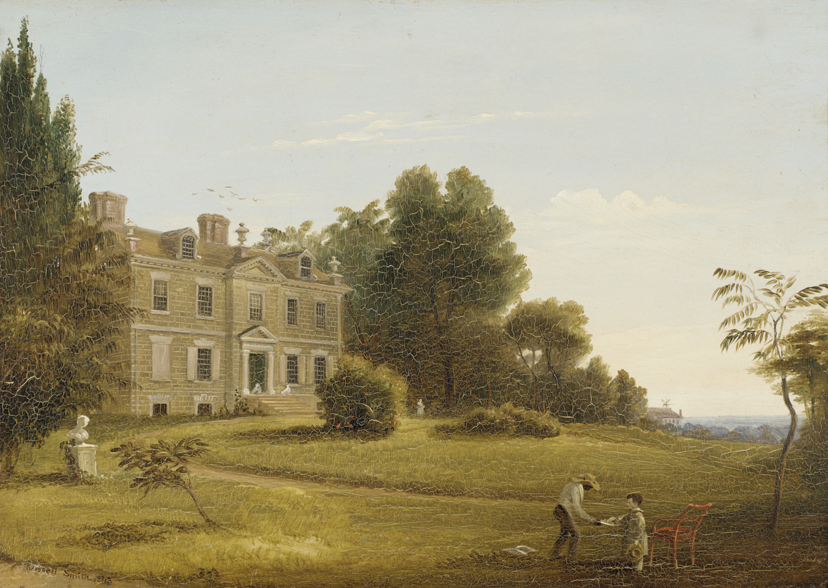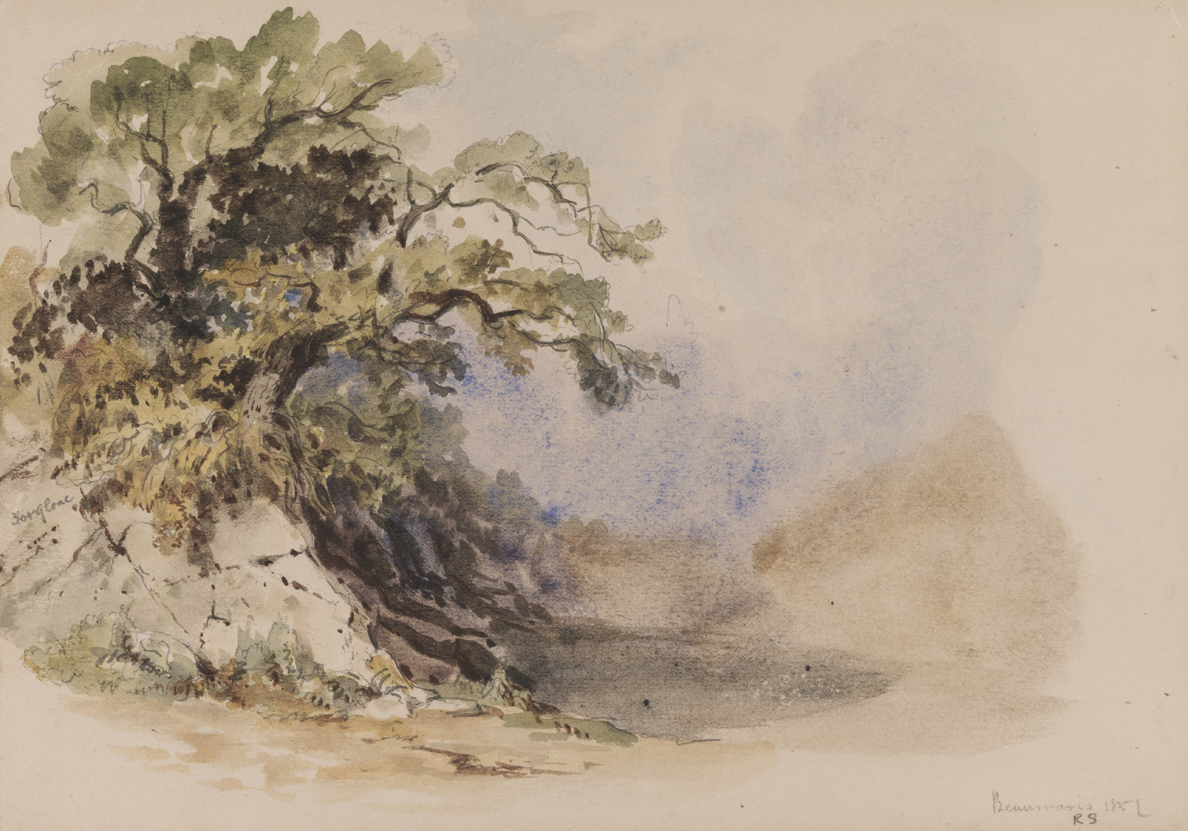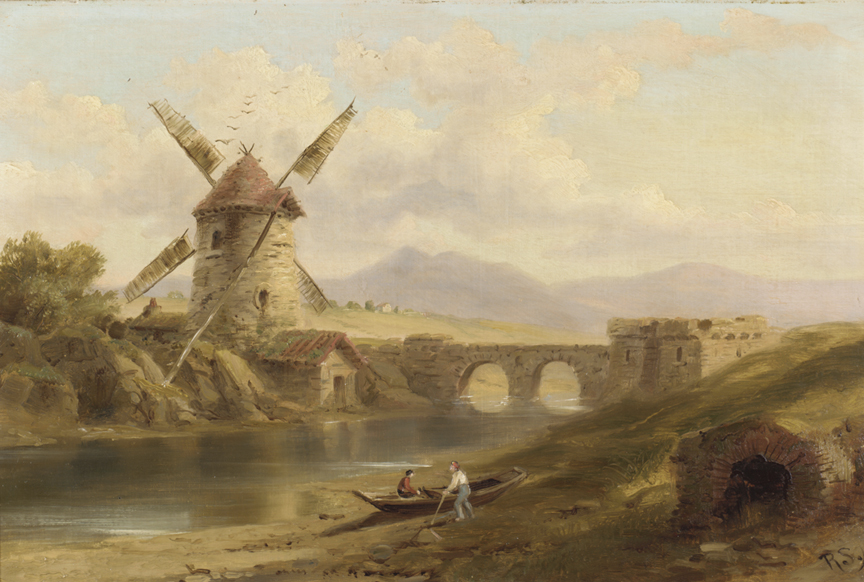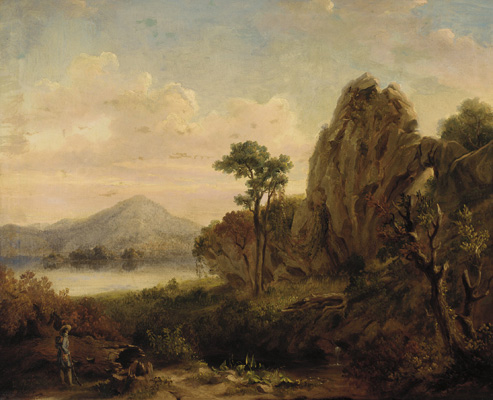
Chew House, Germantown
Russell Smith
An excellent draughtsman, Smith evoked his interest in architecture by painting with a sensitive attention to detail. His landscapes and architectural scenes also suggest an interest in local history, offering a unique depiction of nineteenth-century Philadelphia for contemporary viewers. Chew House, Germantown was depicted as the second in a series of battleground views that Smith completed on commission for the founder of Godey’s Ladey Book, who used the painting of this famed Revolutionary War battle site as an engraved illustration in an issue of his magazine dated December 1844.
The painting depicts the summer residence of Benjamin Chew (1722-1810), a Philadelphia lawyer and Chief Justice of the Supreme Court of Pennsylvania. Benjamin Chew’s father was a plantation owner who bequeathed his property and slaves to his wife and son. More than 40 years after the passing of the Act for the Gradual Abolition of Slavery in Pennsylvania, records from the 1820s document Benjamin Chew’s son as owning at least two slaves in Pennsylvania. Because representational practices of that period dictated the depiction of slaves as part of the property and holdings of the estate owner, it is likely that the African American man represented in this painting was a Chew family slave. Ironically, what was intended as a commemoration of America’s quest for freedom from tyranny is also a memorial to Americans who had not yet attained the liberty that was the promise of the Revolution.
Artist
Date of Birth
(1812-1896)
Date
1843
Medium
Oil on wood
Dimensions
16 13/16 x 24 in. (42.70375 x 60.96 cm.)
Accession #
1845.4
Credit Line
Gift of the artist
Copyright
No known copyright restrictions
Category
Subject
We're so excited you're planning to visit PAFA!
Make time for art — visit us Thursday to Sunday.
Before reserving your tickets, please review helpful information about museum hours, accessibility, building access, and special admission programs.
If you have any questions, feel free to reach out to us at visitorservices@pafa.org — we’d love to help!



